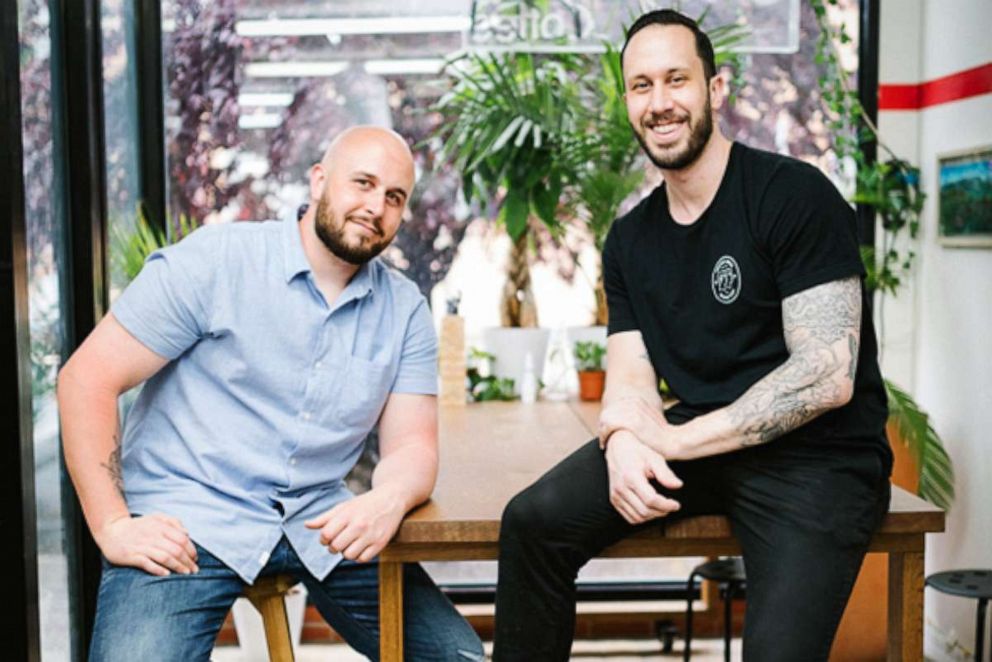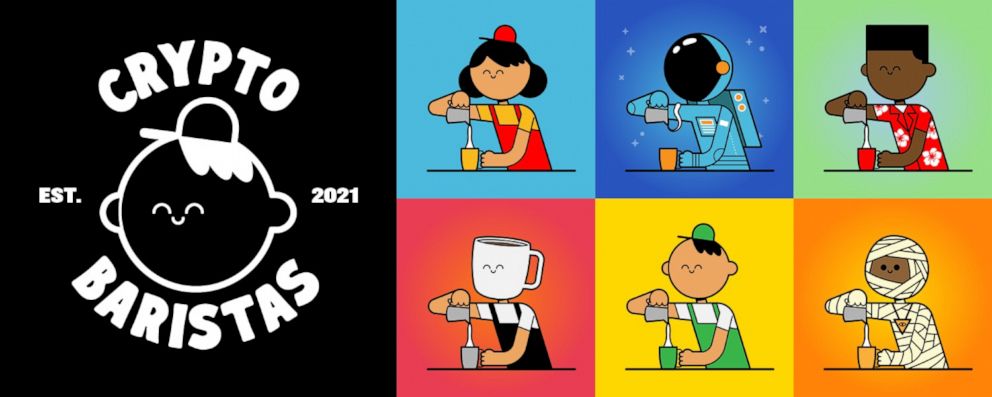05/01/2022 Pizza, mutant apes and a sea of NFTs: Web3 is here
It's an environment that emphasizes user-generated content, as opposed to content posted by others and inone expert's definitionis "dominated by companies that provide services in exchange for your personal data" -- companies like Facebook and Twitter.
One tempestuous U.S. presidency and a pandemic later, the world also witnessed how easily Web2 technology could be manipulated -- bots, lack of granular moderation on social media and anonymity on social media platforms, all helped contribute.
Extremistsandforeign actorsused the applications that define Web2, namely social media and messaging apps, to spread misinformation, disinformation and help sow unprecedented political polarization.
Now there is Web 3.0 (Web3), the next generation of the internet dominated by apps that run on blockchains. Web3 is designed to remove Big Tech from the equation, much of it be free and open-source, and provide transaction information that is unique and authentic.
It brings with it a frenzied hunger for NFTs (non-fungible tokens) -- one-of-a-kind digital products, including art.
And there is optimism from some who say that Web3 has the power to transform the internet and society for the better -- musicians being able to be paid every time a song is played, cutting down on fraud and instantaneous credentialing, for instance.
However, there are naysayers who believe this is all part of the online world's latest grift.
Web3, NFTs and how they intertwine
One of the main components of Web3 currently is cryptocurrency, said Christian Catalini, the founder of the MIT Cryptoeconomics Lab, and a research scientist at the MIT Sloan School.
Another technology under the umbrella of Web3 is NFTs which are used mostly now for digital art and other digital content. The difference between any old JPG image and a JPG that is also an NFT, is that the JPG NFT has a digital token of ownership behind it. You own the JPG NFT unlike any regular JPG you download.
The NFT JPG is created on a blockchain -- a public digital database that records unique and irrevocable cryptocurrency transactions and runs across many computers of which no one person or entity has ownership.
"Web3 is really a suite of technologies that uses these tokens to create new types of digital platforms and new types of digital ecosystems," Catalini said.
Enthusiasm for Web3 may be most apparent on Twitter. You can see users who have added "eth" at the end of their Twitter profile names -- signifying they are active on the Ethereum blockchain -- a specific type of blockchain that uses security mechanisms that differ from other blockchains and is the main platform currently for buying, selling or creating NFTs.
Many of these accounts display the unique and often bizarre NFT art they have purchased as their account profile picture. There are images ranging from humanoid pizza slices, to grotesque, mutant apes to squishy-cute noodle characters.
Fity.eth, as he is known online, is an NFT enthusiast who asked his real name not disclosed for privacy reasons. He's the founder of Apocalyptic Apes, a collage of digital artwork and virtual space made up of mutant cartoon apes and a storyline with an environmental message.
He says he collaborates with a digital artist who draws the ape characters who live in his apocalyptic online world "where food is hard to find, air is hard to breathe, and any sign of life is scarce."
One of the ape NFTs that recently went on sale at Apocalyptic Apes.
Fity.eth's site recently released a crop of new digital art ape NFT characters. They are sold on the OpenSea NFT exchange, one of, if not the largest NFT marketplace. The asking bid price at the time of launch is a fraction of the value of 1 Ethereum digital coin (worth a little over $4,000 at publish) -- which works out to about $271.
The ape NFTs sell out in days, the website shows.
But why would anyone pay that much money for an image of a cartoon ape?
"I think that's the question that the whole world has," Fity.eth said. He attempts to answer by saying he knows an artist who has always made a modest living with their art. "'Think of what I have to go through to sell a piece of art," Fity.eth recalls the artist saying. "I have to paint it, I have to put it on my wall, I have to display it, I have to go to a showroom … people take commission." He said that for that artist, opening a virtual NFT gallery has been financially more beneficial.
But it's also all much more than that, Fity.eth says.
"It's about friendships, it's about relationships," he said. The owners of these ape NFTs are bonded now in a unique online community, he said.
Part of the appeal of NFTs is building exclusive online communities of these digital art holders and offering perks like real-life events and meetups or special offers from businesses. And, through promotions, word-of-mouth and influencers, NFTs can increase in value (like any artwork) with some willing to pay thousands (and sometimes millions) for the hottest NFTs at the moment (you can sell your NFT to another buyer for a higher price than what you paid for it, if the demand is there).
"We're building a lifestyle and we're making a movement," Fity.eth says and adds that a big motivation to launch Apocalyptic Apes is to help raise awareness to reduce air pollution and plastic in the seas. He says he is partnering with another company that uses hemp to replace plastic in bottles, straws and other items.
Several of the Web3 and NFT advocates who spoke with ABC News mentioned tying their personal causes to the emerging technologies.
For example, another NFT proprietor who also asked that his real name be withheld and goes by the online name Snax.eth, founded the group Pizza DAO which threw a global pizza party by selling NFTs -- an event he claims was to bring awareness of the devastation the pandemic brought to the restaurant industry.

Snax.eth shared this image from Bangkok, one of many documenting his NFT-driven glo...
He says Web3's greatest potential is connecting people to do good in the world. "Pizza, like the internet and the blockchain, is a global phenomenon that unites us. Most of our problems on planet earth are distribution problems and NFTs and Web3 are distribution technology. We can leverage digital scarcity to end real-world scarcity," Snax.eth said.
Early-adopting celebrities and brands
Big brands and celebrities are also launching NFT-Web3 projects, tying real-world services and products to digital tokens.
Companies includingNike,Taco BellandCoca-Colahave launched NFTs (mostly tied to fundraising campaigns for social causes) or are making investments in blockchain technology.
But how can NFTs deliver more for brands than the social media channels and tools that already exist? And why on earth would anyone want to own a digital image of a Taco Bell taco?
Those are the types of questions surrounding NFTs and Web3 that academics like Scott Duke Kominers delve into. Kominers is the MBA Class of 1960 Associate Professor of Business Administration in the Entrepreneurial Management Unit at Harvard Business School, and a faculty affiliate of the Harvard Department of Economics.
"In the short term, NFTs are transforming our ability to have ownership of, and thus markets in, digital goods and commodities … and that will start filtering into physical goods and commodities," Kominers told ABC News. Kominers is involved in and advises several NFT projects and has written a paper forHarvard Business Review on how NFTs create value.
NFTs are intriguing not just for artists who have potentially new online marketspaces to display and sell their art, but for musicians as well. The hip hop community has been particularly receptive to NFTs.
Legendary hip hop producer Timbaland is offering hissecond online NFT auction. While Timbaland's representatives did not respond to a request for comment, the music producer has spoken enthusiastically about NFTs and the metaverse. His latest NFT auction is built around tracks from his upcoming EP, "Opera Noir,"Decrypt reported.
Never late to a trend, Snoop Dogg recently announced his upcoming NFT project on Twitter and changed his official profile pic to anNFT cartoon ape.
Def Jam records founder Russell Simmons is alsoreportedly working on an NFT project.
And there's money to be made according to some experts, for not-so-famous musicians, other creators and everyday people who purchase NFTs, according to some. Kominers says the very nature of blockchain can provide new economic opportunities for creators. "Every transaction that occurs, some share of that transaction goes back to the original artist or creator. And we're seeing [that] with music," he said.
"Many [NFTs] are set up so that some share of every transaction is sent back to the original creator (or more technically, the original creator's crypto wallet). For popular collections, this can be quite lucrative -- some creators' works have tens of thousands of ETH [Ether] or more in secondary transactions; a 2.5% royalty on 10,000 ETH in secondary transactions would be 250 ETH, or roughly $1 million," he said.
Fity.eth also speculated on the benefit for anyone who purchases music NFTs.
"Down the road, you're going to be able to buy ownerships of a song. And you'll be able to profit share from that song from every time that song was played," he said.
NFTs: A new way to fund startups?
A-listers and big brands aren't the only ones jumping into NFTs, though. The small business world is dabbling as well.
Dan and Nick Hunnewell are brothers and owners of Coffee Bros., specialty coffee roasters based in Queens, New York City. In addition to roasting and selling their coffee online, they've created an NFT project called Crypto Baristas. The funds generated through their NFT characters will go toward opening their first café in New York City in 2022, Dan said.
"It's somewhat like a Kickstarter campaign," Dan told ABC News. By offering NFTs, "we're reaching out to a community to build funds."

DAN and Nick Hunnewell were able to launch their dream of opening a local coffee shop...
"We're working with an artist, Tony Bui, who has his own style and existing following. He comes up with characters, and then we create a story for each one," Dan said.
NFTs have also allowed them to quickly build a community of 11k followers, fans, and investors. He and Nick use Discord, a messaging and communication app that hosts a lot of blockchain and NFT communities, to communicate with their NFT-holding customers.
"The community that we have on Discord is phenomenal," he said. Through Discord, Crypto Baristas can offer fans who buy NFTs "caffeinated perks" like 15% off products for life and a say in how the funds generated are used towards the café and future projects.

The transformative potential of Web3 and NFTs, according to some
Some experts and enthusiasts see Web3 and the technologies that come with it like NFTs as able to do far more than give us ways to collect cool stuff and join online clubs.
"I sit on a board with NFT people," Fity.eth said. "They're talking about our passports, our driver's licenses on the blockchain. … Imagine you lose your passport, you just go on your computer, you create it, you have all your credentials, and you get a passport. Since it's one-of-a-kind on a blockchain, you can verify [it]."
Web3 and NFTs present opportunities "for other digital interactions to create forms of ownership," Kominers said.
The technologies are poised to "change our interface with digital content," he said. For example, the digital wallets used to store NFTs and cryptocurrency can be programmed to plug into other platforms, like online shopping sites, he said.
Web3 skeptics
NFTs currently offer new generations of collectibles, give brands new marketing opportunities and provide creators with new ways of making money, so -- what's not to like?
Plenty, if you ask software engineer Geoffrey Huntley. Huntley spends a lot of time online expressing skepticism about NFTs and Web3.0.
"Currently, the majority of blockchains, especially the ones used in the NFT space are permissionless," he said.
That means the same digital wallet that someone uses to store their NFTs can be sent anything by anybody, Huntley explained, including abusive content like revenge porn or other digital forms of harassment.
Digital wallet holders can't delete anything unwanted sent to their wallet. That inability to delete data could also put blockchain tech at odds with the European Union's General Data Protection Regulation policy, he said.
"The blockchain is immutable. When something's on there, it's permanently on there," Huntley said. "There's nothing stopping someone for sending abusive content into your wallet, like spam, and then you can't do anything to delete it."
Kominers says that's true, "to a large degree."
"An address on a public blockchain is kind of like an email address, in the sense that anybody who knows yours can send things to you … even if you "delete" something from your wallet, there's still a traceable history that the content was there at some point," he said.
Kominers said that for now, crypto-enthusiasts mitigate this risk by "having multiple wallets, some more public than others (just like people might have both personal and professional email addresses). And blockchain front-end platforms have some degree of spam filtration -- OpenSea, for example, has systems to hide spam NFTs. But in the near term we definitely need better wallet privacy and content filtration technology."
While far from perfect, Facebook, Twitter and other Web2 applications do have privacy controls baked in that are so far lacking on blockchain platforms.
Huntley also mentioned a concern brought up by green energy activists: It is very resource- intensive to create NFTs and cryptocurrency.
The World Economic Forum said this about Bitcoin alone: "In 2020, the bitcoin network consumed a reported 131.80 TWh of power to execute the algorithms that power its "mining" operations. This is equivalent of the power consumed by Argentina."
"I suspect we're going to soon see a combination of government leadership, regulation, and consumer sentiment pushing towards more sustainable blockchain technologies that are less costly to run," Kominers said.
Even Jack Dorsey and Elon Musk have offered recent criticisms of Web3 and blockchain. Dorsey seemed to mock venture capitalist involvementin a Dec. 20 tweet.
"You don't own "web3." The VCs and their LPs do. It will never escape their incentives," Dorsey portends. Venture capitalists have made big investments in crypto in 2021, ranging in the billions according to some reports,such as this one in Forbes.
In a tweet dated Dec. 19, SpaceX founder Musk called the metaverse (another fundamental component of Web3 that involves virtual and augmented reality),"more marketing buzzword than reality right now."
Web3 Wild West
The new internet is very much a new Wild West, of sorts. There are very few consumer protections right now around blockchain, crypto and NFTs.
And that, according to Kominers, "creates a situation where there are lots of ways" people can be taking advantage of or scammed.
"One of the biggest barriers at the moment to much wider spread of crypto and engagement in markets like the NFT market, is that most of the ways of accessing these crypto markets just don't have anything resembling the protections we're used to in other sorts of financial services or product markets."
But he said there will be regulatory frameworks in place for Web3, "possibly even reasonably soon."
Blockchain, Web3 is "not where it needs to be for mainstream adoption," said Catalini. "We're still in a very embryonic phase." But he says Web3 and its technologies are here to stay.
"Because they do represent a fundamentally novel way to design all sorts of interactions … for the creator … the musician of writer, blogger, or, you know, someone that creates any other sort of digital content … And so I think with all of these technologies, there's a lot of potential in the long run. And there's a lot of things that need to be figured out in the immediate term," he added.
"Where we are today is where the internet was with AOL dial-up, this is so new, and we're so early," Fity.eth said.
 (0)
(0)
 (0)
(0)
https://abcnews.go.com/Technology/pizza-mutant-apes-sea-nfts-web-30/story?id=81745754
